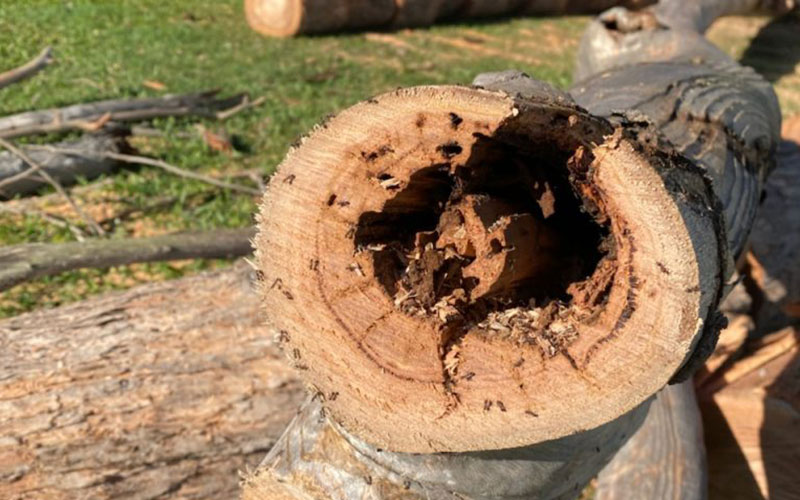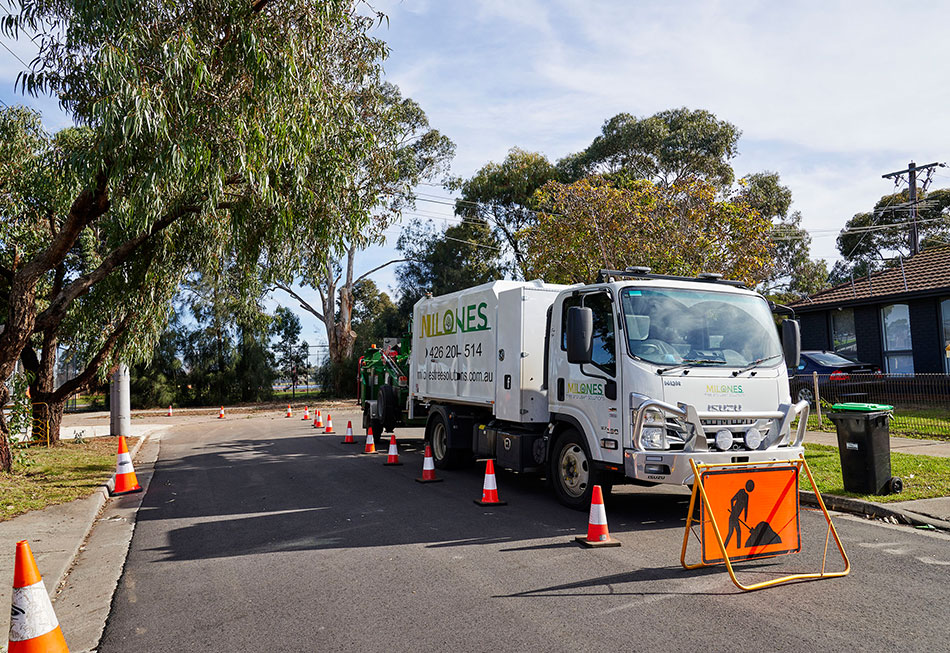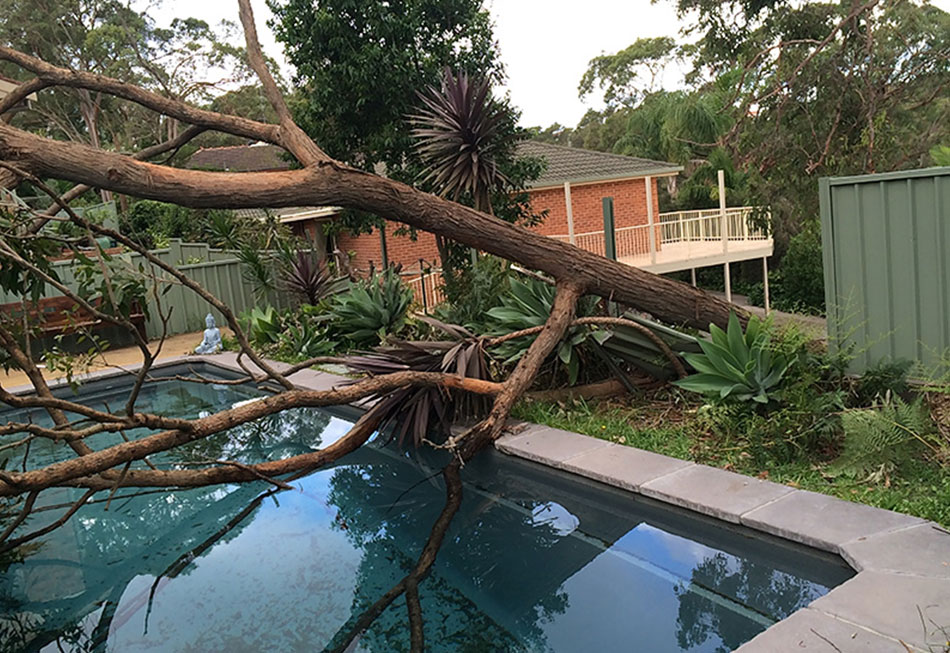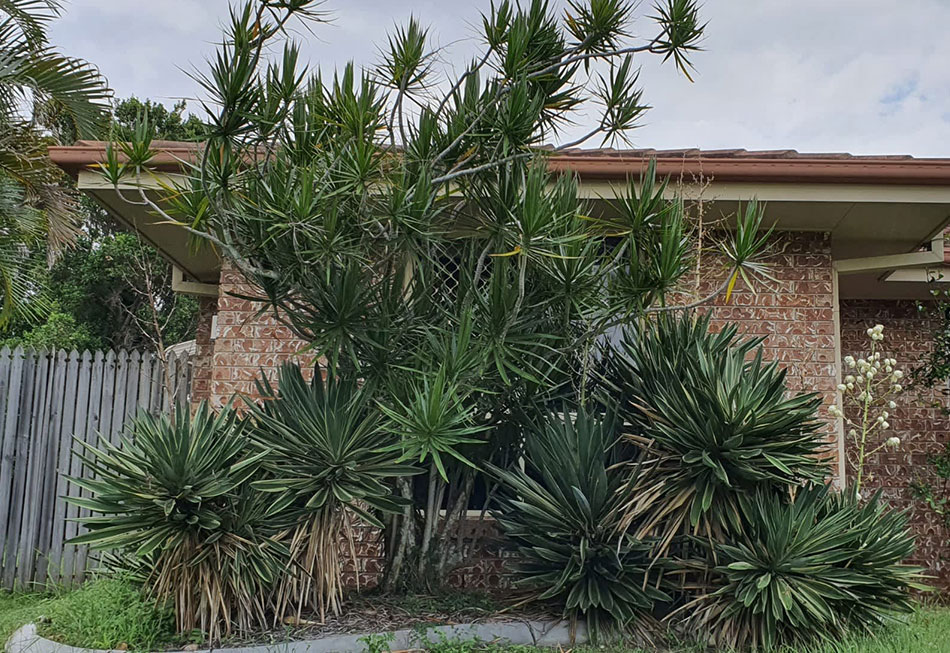Tree removal is a delicate task, especially when space is limited. In urban areas like…
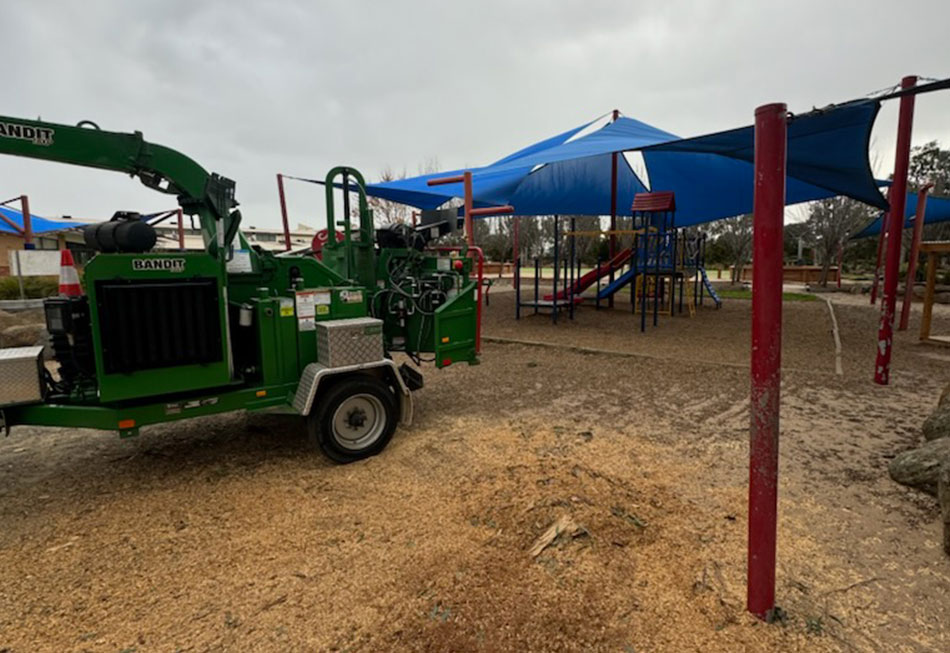
Hazardous Tree Removal Melbourne – When to Remove a Dangerous Tree
Trees are a valuable asset to any property. They provide shade, beauty, and even boost property value. But what happens when a tree becomes a hazard? Whether due to disease, structural weakness, or external damage, hazardous trees pose a significant risk to both people and property. Knowing when to remove a dangerous tree is crucial for maintaining safety. This comprehensive guide will walk you through identifying hazardous trees, determining the best time for removal, and understanding why professional help is essential.
In This Article:
- How Do You Identify a Hazardous Tree?
- When Should You Remove a Hazardous Tree?
- Can I Remove a Dangerous Tree Myself?
- Milone’s Tree Solutions: Your Trusted Partner in Dangerous Tree Removal
- Have a Hazardous Tree? Act Now
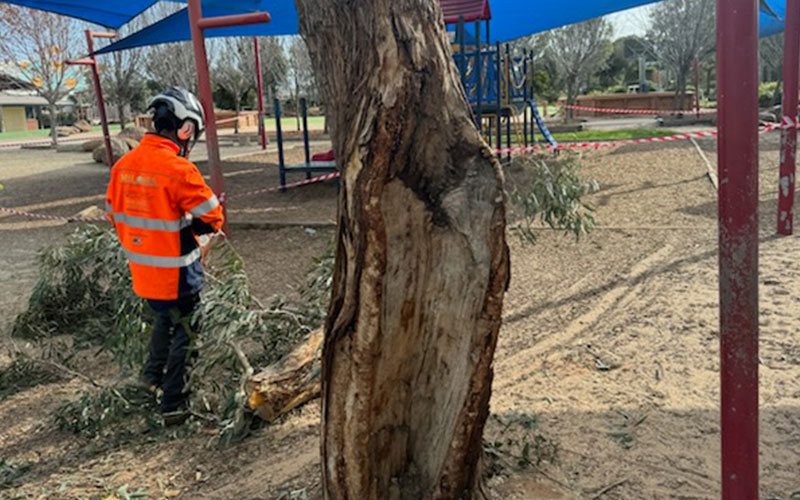
How Do You Identify a Hazardous Tree?
Spotting a hazardous tree before it causes damage is key. While not all trees that look unhealthy are dangerous, certain signs should trigger concern. Here’s what to look for:
1. Dead or Dying Wood
Dead branches are a clear indicator that a tree may be in trouble. These branches can fall unexpectedly, especially during high winds or storms, posing a risk to anything below. A tree with multiple dead branches may be struggling with internal issues, signaling it could be a hazard. Our Complete Dead Tree Removal Guide article has more in-depth information.
2. Cracks and Splits
Visible cracks or splits in the trunk or major limbs often indicate structural weakness. These splits can be caused by natural growth, previous storm damage, or internal decay. Even if a tree seems stable, a sudden windstorm can exacerbate these weaknesses, leading to a fall.
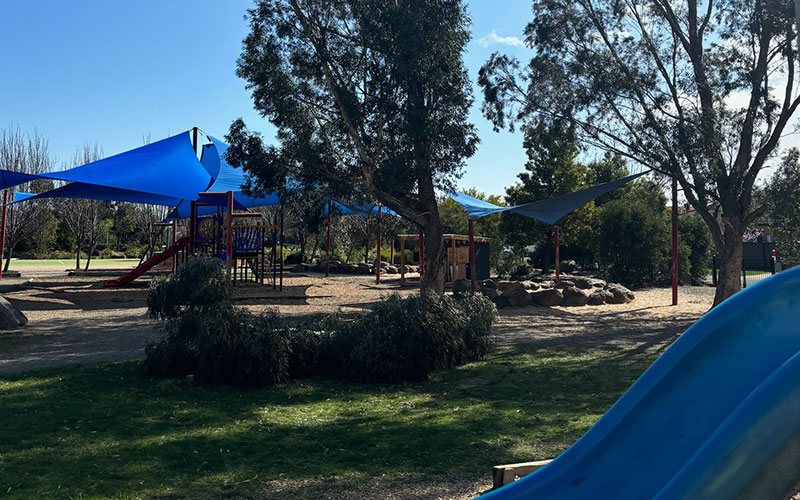
3. Leaning Trees
Not all leaning trees are dangerous, but a sudden or progressive lean could mean that the tree’s roots are compromised. If the soil around the base of the tree is disturbed, or if the roots are exposed, the tree may be on the brink of toppling.
4. Root Damage
Roots anchor a tree, providing stability. Any damage to the root system can severely impact a tree’s health and stability. Signs of root damage include lifting roots, disturbed soil, or a shallow root system exposed at the base of the tree.
5. Fungal Growth
Fungi, such as mushrooms growing at the base or on the trunk of a tree, are often indicators of internal decay. This decay weakens the tree from the inside out, making it a significant hazard, even if the exterior looks healthy.

6. Evidence of Pest Infestation
Certain pests can cause extensive damage to trees, eating away at the wood and creating weak points. Signs of infestation should be taken seriously, especially when combined with other structural issues.
7. Fire Damage
In bushfire-prone areas, trees damaged by fire may have hidden weaknesses. The intense heat can cause internal damage, making the tree a potential hazard even if it looks stable from the outside. For more detailed information on identifying hazardous trees, particularly those damaged by bushfires, refer to the Hazardous Tree Removal after Bushfire document by the Victorian Department of Environment, Land, Water, and Planning (DELWP).
Landholders should consider engaging an arborist or a hazard tree assessor if trees have incurred severe damage by recent fire and appear unstable. – Vic.gov.au
8. Overhanging Branches Near Roofs
Branches that extend over your roof can pose a significant risk, especially if they become weakened due to disease, pests, or storm damage. Not only can falling branches cause physical damage to your roof, but they can also lead to clogged gutters and create pathways for pests to enter your home. For more detailed information, you can read our dedicated article on tree branches overhanging roofs.
When Should You Remove a Hazardous Tree?
Once a tree has been identified as hazardous, determining when to remove it is critical. Here are the key factors to consider:
1. Immediate Danger
If a tree poses an immediate threat to people, property, or infrastructure, it should be removed as soon as possible. This includes trees that are leaning dangerously or have significant structural defects.

2. Proximity to High-Traffic Areas
Trees near roads, footpaths, playgrounds, or buildings should be regularly assessed for potential hazards. If a tree in these areas is deemed hazardous, removal should be prioritized to prevent accidents.
3. After Severe Weather
Following storms, heavy winds, or bushfires, trees may have sustained damage that isn’t immediately apparent. It’s crucial to have trees inspected by a professional arborist after such events to assess any potential hazards.
Trees are to be assessed by a qualified and experienced arborist to determine whether there is an immediate risk of personal injury or damage to property, including to road users, as a result of the fire impact to the tree. – Pyrenees.vic.gov.au
4. Preventive Measures
In some cases, trees may not pose an immediate threat but could become hazardous over time due to disease, age, or environmental factors. Proactive removal can prevent future problems, especially in areas prone to extreme weather conditions.

5. Regulatory Compliance
In certain regions, local councils may have regulations regarding the removal of trees, especially those deemed hazardous. It’s important to comply with these regulations, and a professional arborist can assist in obtaining the necessary permits for removal.
At Milone’s Tree Solutions, we understand the importance of timely and safe tree removal. Our team is equipped to handle hazardous trees efficiently, minimizing risks to people and property.
Can I Remove a Dangerous Tree Myself?
The idea of tackling tree removal yourself might be tempting, especially if you’re an avid DIY enthusiast. However, removing a hazardous tree is fraught with risks that can endanger your safety and that of others. Here’s why professional removal is the best option:
1. Safety Concerns
Tree removal, especially of hazardous trees, is inherently dangerous. It requires specialized equipment and knowledge to safely remove a tree without causing injury. Without proper training, you risk serious injury or worse.
2. Lack of Proper Equipment
Professional tree removal services, like those provided by Milone’s Tree Solutions, use specialized equipment including stump grinders, chainsaws, and wood chippers. These tools are well-maintained and suited for the job. Attempting to remove a tree without the right tools can lead to accidents and incomplete removal.
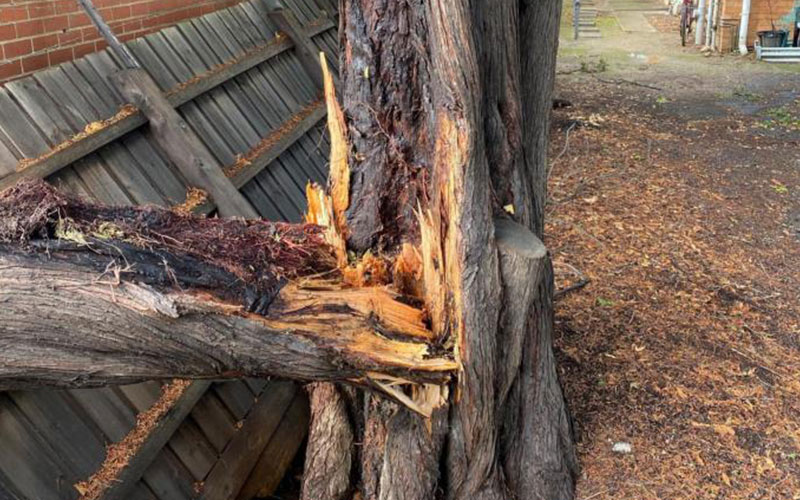
3. Risk of Property Damage
Improper tree removal can cause significant damage to your property, neighboring properties, or public infrastructure. Professionals have the experience and expertise to bring down a tree safely, minimizing the risk of unintended damage.
4. Legal and Insurance Issues
If you remove a tree yourself and something goes wrong, you could be liable for any resulting damage. Additionally, many insurance policies may not cover damage caused by amateur tree removal. Always check for a certificate of currency to ensure that your tree removal service is fully insured, as is the case with Milone’s Tree Solutions.
Trees provide great benefits for the urban environment, but they can become hazardous to people and property. This can be associated with storm damage, fungal attack, climatic conditions, growth patterns and damage by animals and people. – Monash.vic.gov.au
5. Environmental Considerations
Professional arborists not only remove trees safely but also ensure that the surrounding environment is protected. This includes proper disposal of the tree and its parts, minimizing disruption to the ecosystem.
Given these risks, it’s clear that hiring a professional is the safest and most effective way to remove a hazardous tree. At Milone’s Tree Solutions, our qualified arborists have the expertise to assess, remove, and manage trees in a way that prioritizes safety and environmental stewardship.
Milone’s Tree Solutions: Your Trusted Partner in Dangerous Tree Removal
When it comes to hazardous tree removal, choosing a service provider you can trust is essential. Milone’s Tree Solutions is fully insured and staffed by qualified arborists who understand the complexities of tree care and removal. We serve clients across Werribee, Melbourne, and Geelong, offering reliable and professional services to ensure your property remains safe and aesthetically pleasing.
Our commitment to quality, safety, and customer satisfaction sets us apart from the competition. Unlike some operators in the industry who may cut corners or lack proper insurance, Milone’s Tree Solutions takes every precaution to protect our clients and their properties.
Have a Hazardous Tree? Act Now
Hazardous tree removal is not a task to be taken lightly. Identifying dangerous trees and knowing when and how to remove them can prevent accidents and save lives. Whether you’re dealing with a tree that’s been damaged by a storm, showing signs of decay, or leaning precariously, it’s vital to act quickly and enlist the help of professionals.
Milone’s Tree Solutions offers comprehensive tree removal services, ensuring that every job is done safely, efficiently, and in compliance with all relevant regulations. Don’t take chances with your safety—contact Milone’s Tree Solutions today for a consultation and keep your property safe from the dangers of hazardous trees.
For more information on hazardous tree removal after bushfires, please refer to the Hazardous Tree Removal after Bushfire document provided by the Victorian Department of Environment, Land, Water, and Planning.
Disclaimer: The information provided in this article is for general guidance only and does not constitute legal advice. For specific advice regarding hazardous tree removal and related legal issues, please consult with legal and professional authorities.
Common FAQ’s about Hazardous Tree Removal:
What is a dangerous tree?
A dangerous tree is one with structural damage, such as dead branches, leaning, or cracks, often caused by fire. These conditions make it a potential hazard to people or property.
Who can inspect a potentially dangerous tree?
A qualified arborist should inspect dangerous trees to assess the risk and determine necessary actions. You can book an inspection through Milone's Tree Solutions.
Who is responsible for a hazardous tree on my property?
Property owners are responsible for managing hazardous trees. If the tree poses a risk, immediate action may be necessary to ensure safety.
How long does it take to remove a hazardous tree?
The removal time depends on the tree’s size, condition, and access. It can range from a few hours to longer, depending on the complexity of the job.
Does a dangerous tree need to be cut down?
Not always. Canopy reduction or pruning might make the tree safe again however it varies depending on specific scenarios.

